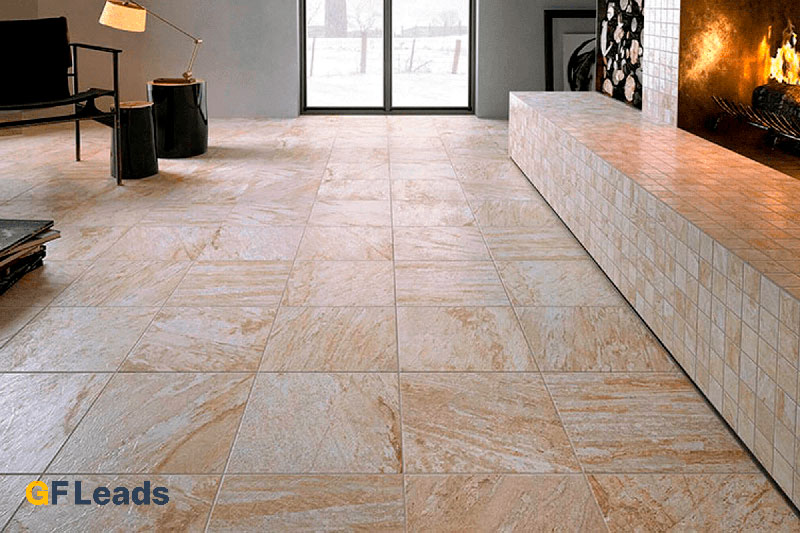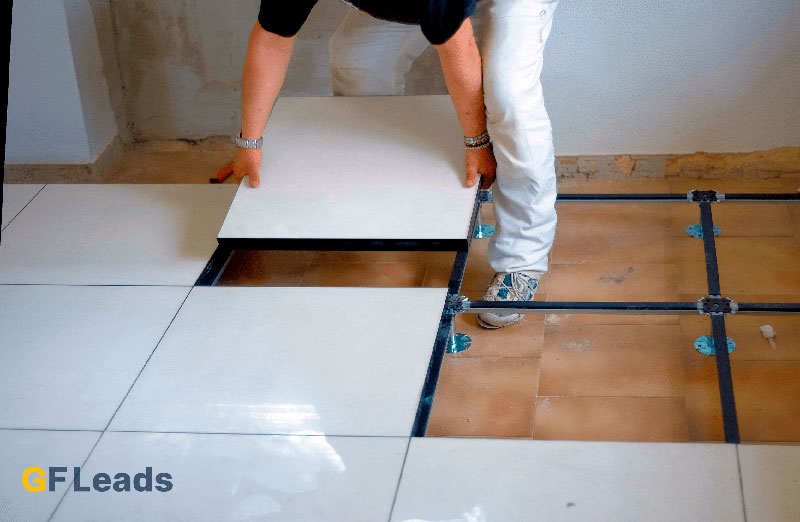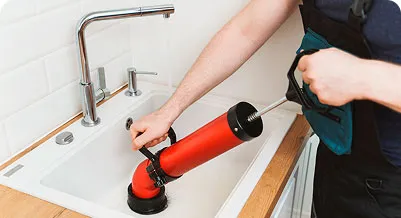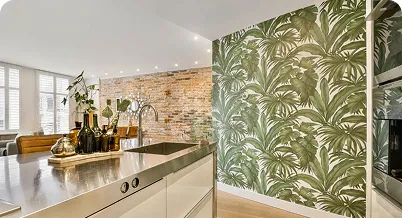Laying tiles on tiles: real savings or hidden risks?
GF Leads, 23 July, 2025
As a leading intermediary between craftsmen and customers in the repair industry throughout the United States, GFLeads is confronted with questions about controversial technologies on a daily basis. One of them is laying new tiles on top of the old one. Let's figure out when this is acceptable and when it is strongly discouraged.
Why choose to lay tiles on tiles?
At GFLeads, we understand that 85% of decisions about this method of laying are made for three reasons:
- Saving time - our partner craftsmen note that dismantling increases the work time by 30-40%
- Cost reduction - according to GFLeads statistics, complete dismantling increases the cost of work by 15-25%
- Lack of information - many clients are simply unaware of the risks
But! Our experts, having analyzed 500+ cases through our platform, confirm that only 10% of such works turn out to be durable.
In 90% of cases, laying tiles on tiles is a gross mistake.
At GFLeads, we firmly believe that quality and durability should be a priority in any repair work. Laying tiles is an investment in your home, and we want this investment to bring joy for many years to come. That is why we strongly recommend that our clients and partners carefully weigh the pros and cons before making a decision about laying tiles on tiles. Remember, a miser pays twice – saving at the initial stage can result in much higher costs in the future.
Why should you trust the experts of GFLeads?

Our platform unites thousands of experienced craftsmen across the United States, and also has our own laboratory where we test various materials and technologies. We analyze real customer reviews and statistics of completed work to provide you with the most up-to-date and reliable information. GFLeads is your reliable partner in the repair world, who will help you avoid mistakes and achieve results that exceed your expectations.
A professional approach requires abandoning the tile-to-tile technology in the following cases::
1. Voids under existing tiles.
Any area with insufficient glue filling is a potential peeling area. The new coating, laid on an unstable layer, will lose its grip in the first months of operation.
2. Defects: cracks, chips, peeling.
Even a point defect triggers a chain reaction: loads are redistributed, the crack begins to grow, and the upper layer collapses along with the lower one. It is especially dangerous when laying large-format porcelain stoneware, which creates significant linear stresses.
3. Unsuitable foundation.
First of all, movable bases such as PVC, plywood, and wood are susceptible to seasonal deformation, thermal expansion, and shrinkage, which often causes the adhesive joint to crack.
4. Glossy or low-adhesion surface.
Glazed tiles, especially those with protective coatings or traces of old silicones, dramatically reduce the coefficient of adhesion. This is especially critical on vertical surfaces where there is no mechanical support.
5. Fungus and mold on the old coating.
They penetrate into the tile body and into the adhesive joint — even if the external traces are removed, they can remain deep in the old adhesive layer and lead to re-infection of the new finish.
6. Lack of space.
Laying the second layer "eats up" 1.5–2.5 cm. In small bathrooms or kitchens, this is critical: the doors stop closing, the plumbing loses its ergonomics, and the thresholds rise.
7. Problems with adhesion
According to the GFLeads Lab, which has tested 20 types of adhesives.:
- On glossy tiles, 78% of the compounds do not give the desired adhesion.
- In 92% of cases, additional surface treatment is required.
8. Risk to the reputation of the master
At GFLeads, we keep ratings of craftsmen, and such "simplified" jobs:
- They receive 40% more complaints
- The specialist's rating is reduced by 1.5-2 points.
9. Financial losses
Our calculations show that
the average cost of rework is $1,200
Loss of time - 7-10 business days
When does GFLeads allow such a method?

In our partner program, we allow tiling ONLY if:
- Availability of a ground inspection report
- Using adhesives of Class C2 and higher from our approved list
- Guarantees of the master
For GFLeads customers: We provide a free foundation check before starting work.
Alternative solutions from GFLeads
Instead of risky styling, we suggest:
- Complete dismantling with garbage disposal
- An accelerated version using our trusted teams
Output from GFLeads
The technology of laying tiles on tiles is theoretically applicable, but in most cases it does not meet the requirements of building reliability and durability. And it's not justified by the risks at all! In case of any doubt, it is better to dismantle and prepare the base anew. This is the only way, as well as thanks to high-quality building materials, to guarantee the durability and quality of the new finish.
As a professional platform, we recommend that
- the Masters do not risk their reputation.
- Clients should demand the dismantling of the old coating
- Partners should offer only proven solutions.
Join the GFLeads:
- For craftsmen, a steady flow of orders
- Quality assurance for clients
- Partners - up to 15% of the cost of work
Get a free consultation from our experts today!
Table of content
- Why choose to lay tiles on tiles?
- Why should you trust the experts of GFLeads?
- When does GFLeads allow such a method?
- Output from GFLeads


